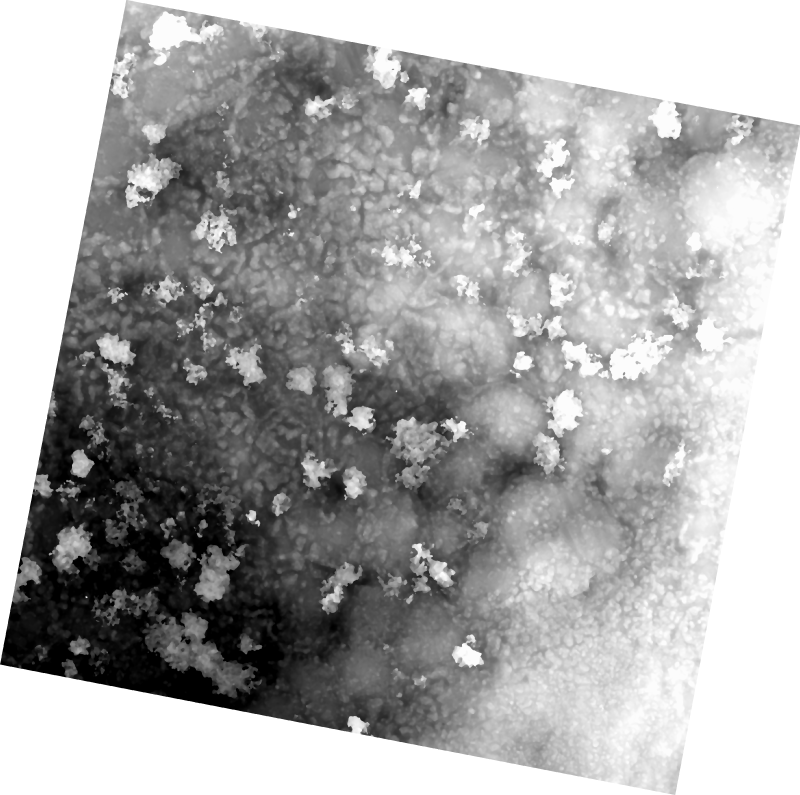Cartography
Type of resources
Available actions
Topics
Keywords
Contact for the resource
Provided by
Years
Formats
Representation types
Update frequencies
status
Service types
Scale
-
Map of Canada showing locations of facilities selling nautical charts in both paper and digital formats.
-

This dataset includes all MPMO projects at various stages in the review process, including those that are currently undergoing review and those that have completed a review.
-

This data set presents the places of interest in the City of Montreal according to the classification carried out as part of the Montreal on Foot (MàP) initiative in 2020. The Montréal à Pied project aims to improve orientation and pedestrian paths throughout Montreal. Although the data concern the territory of the boroughs, places of interest may be located on the territory of linked cities for a better coherence of geographic information.**This third party metadata element was translated using an automated translation tool (Amazon Translate).**
-
Canada is divided into 308 electoral districts. A representative or member of Parliament is elected for each electoral district. Following the release of population counts from each decennial census, the Chief Electoral Officer determines the number of seats in the House of Commons and publishes the information in the Canada Gazette. Electoral boundaries commissions then determine the adjustments to the constituency boundaries. The federal electoral boundaries commissions are independent bodies that make all decisions regarding the proposed and final federal electoral boundaries. Elections Canada provides support services to the boundaries commission in each province. Based on reports from these commissions, the Chief Electoral Officer prepares a representation order that describes the boundaries and specifies the name and the population of each FED. The representation order is in force on the first dissolution of Parliament that occurs at least one year after its proclamation. The 2003 Representation Order (proclaimed on August 25, 2003) was based on 2001 Census population counts, and increased the number of FEDs to 308, up from 301 from the previous 1996 Representation Order. Ontario received three additional seats, while Alberta and British Columbia each gained two seats. The names of FEDs may change at any time through an Act of Parliament.
-

__The link: *Access the data directory* is available in the section*Dataset Description Sheets; Additional Information*__. Ecoforest maps in PDF format are available at a scale of 1/20,000 and cover Quebec territory approximately up to the 52nd parallel. Each map covers an average area of approximately 250 km2 and presents forest information for the territory concerned. Its accuracy is approximately 10 meters. These maps are an image of the current ecoforest map for the corresponding year. __2021, 2022, 2023 and 2024 cards__ The 2021, 2022, 2023 maps, as well as those of 2024, are produced from the current ecoforest map of the corresponding year. It represents the result of the photo-interpretation of aerial photographs taken during the 4th and 5th ecoforestry inventories of southern Quebec to which were added natural disturbances (fires, epidemics, windfalls, etc.) and forest interventions (harvesting and reforestation) carried out in the public forest following the year in which the picture was taken. According to the maps, data using the forest stand inventory approach (AIPF) is included when available for a complete sheet. Main components: type of vegetation (forest species grouping, density class, height class, age class, etc.) or type of AIPF vegetation (detailed forest species, density (%), height (m), age class, etc.); slope class; type of terrain; nature of the terrain (peatlands, height class, age class, etc.) or type of AIPF vegetation (detailed forest species, density (%), height (m), age class, etc.); slope class; nature of the terrain (peatlands, gravel, etc.); hydrography (lakes, rivers, streams, swamps, etc.); transport network and bridges; topography (level curves); fragmentation. __2019 and 2020 maps__ The 2019 maps, as well as those of 2020, are produced from up-to-date ecoforest maps of the corresponding year. They represent the result of the photo-interpretation of aerial photographs taken during the 4th and 5th ecoforestry inventories of southern Quebec to which were added natural disturbances (fires, epidemics, windfalls, etc.) and forest interventions (harvesting and reforestation) carried out in the public forest following the year in which the photo-interpretation of aerial photographs from the 4th and 5th ecoforestry inventories of southern Quebec were taken. An update is then carried out taking into account natural disturbances (fires, epidemics, windfalls, etc.) and forest interventions (harvesting and reforestation) carried out in public forests. The information presented corresponds to the current ecoforest map of 2019 or 2020 as the case may be. On each map, the name of the stands is expressed by the group of species. Main components: type of vegetation (forest species, density, height, age class, etc.); slope class; type of terrain (peatlands, gravel, etc.); hydrography (lakes, rivers, streams, swamps, etc.); transport network and bridges; topography (level curves); fragmentation. __Maps 2015__ The 2015 maps are produced from the photo-interpretation of aerial photographs from the 3rd and 4th ecoforest inventories of southern Quebec. An update is then carried out taking into account natural disturbances (fires, epidemics, windfalls, etc.) and forest interventions (cutting and planting) carried out in public forests. The information presented corresponds to the 2015 updated ecoforest map. MAP FOR PRINTING (GEOREFERENCED) **This third party metadata element was translated using an automated translation tool (Amazon Translate).**
-

__The link: *Access the data directory* is available in the section*Dataset Description Sheets; Additional Information*__. Formerly, forest maps were produced by the Land Survey Department of the Ministry of Lands and Forests. Some of these maps dating **from 1924 to 1946** still exist and are treasured at the National Archives of Quebec. The information they contain makes it possible to locate and characterize forest areas in certain regions of Quebec. Color codes were then assigned for each of the following classes: young forests, old forests, burned, logged, rocky, savannas, and colonization. **These historical forest maps are available in two digital formats (PDF and TIFF) . ** **This third party metadata element was translated using an automated translation tool (Amazon Translate).**
-

SQRC grid (Quebec Cartographic Reference System) at a scale of 1:500 and 1:1000 of Montreal Island. The dxf file contains an underlying layer of streets for better location.**This third party metadata element was translated using an automated translation tool (Amazon Translate).**
-

__The link: *Access the data directory* is available in the section*Dataset Description Sheets; Additional Information*__. The Directorate of Forest Inventories (DIF) carries out assessments of tree biomass and their carbon content at the scale of ecoforest stands to deepen knowledge on the contribution of forests in the global carbon cycle. This information can be useful in the context of climate change to document the mitigating role played by forests. The resulting product, a database containing a single table entitled “BIOMASSE_CARBONE_PEE_ORI_PROV”, shows the biomass and carbon values of living trees above ground for all productive ecoforest stands 7 m or more in height. The exploitation of the database requires the data from [the original ecoforest map] (https://www.donneesquebec.ca/recherche/dataset/resultats-d-inventaire-et-carte-ecoforestiere) and the establishment of a connection with the information of the polygonal entity class of settlements. The database includes biomass variables converted to carbon stocks, detailing the biomass of wood, bark, branches, and foliage. For a thorough understanding, you can consult the Read Me associated with this product and the publication [“Biomass and carbon forests in southern Quebec - Method and use”] (https://mrnf.gouv.qc.ca/nos-publications/biomasse-carbone-forestiers-quebec-meridional/) (MRNF, 2023) which offers additional methodological information. **This third party metadata element was translated using an automated translation tool (Amazon Translate).**
-

Map indexes are grids that divide the territory into several sheets for the whole of Quebec. The use of these indexes allows the identification of a map sheet number for a specific territory at the scale of 1/2,000, 1/20,000 and 1/100,000. The cartographic indexes come from the Quebec cartographic reference system (S.Q.R.C), which divides the territory into hierarchical units and at different scales (1/100,000, 1/20,000, 1/10,000, 1/10,000, 1/10,000, 1/10,000, 1/10,000, 1/5,000, 1/5,000, 1/5,000, 1/1,000). This system is compatible with the [**National Cartographic Reference System (S.N.R.C) **] (https://ressources-naturelles.canada.ca/sciences-terre/geographie/information-topographique/cartes/9766).**This third party metadata element was translated using an automated translation tool (Amazon Translate).**
-

The 1 cm resolution digital surface model (DSM) was created from unmanned aerial vehicle (UAV) imagery acquired from a single day survey, July 28th 2016, in Cambridge Bay, Nunavut. Five control points taken from a Global Differential Positioning System were positioned in the corners and the center of the vegetation survey. The DSM covering 525m2 was produced by Canada Centre for Remote Sensing /Canada Centre for Mapping and Earth Observation. The UAV survey was completed in collaboration with the Canadian High Arctic Research Station (CHARS) for northern vegetation monitoring research. For more information, refer to our current Arctic vegetation research: Fraser et al; "UAV photogrammetry for mapping vegetation in the low-Arctic" Arctic Science, 2016, 2(3): 79-102. http://www.nrcresearchpress.com/doi/abs/10.1139/AS-2016-0008
 Arctic SDI catalogue
Arctic SDI catalogue